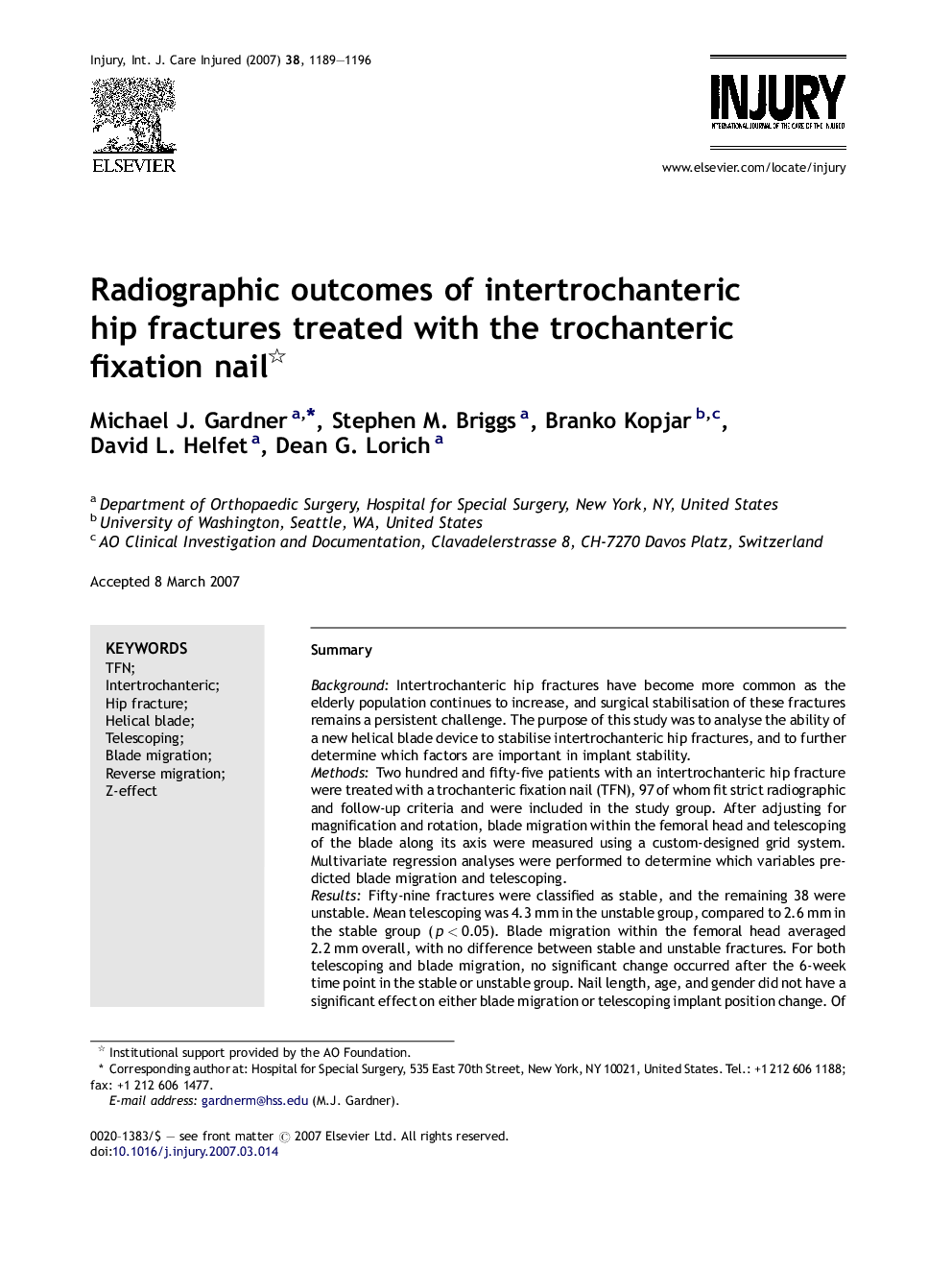| کد مقاله | کد نشریه | سال انتشار | مقاله انگلیسی | نسخه تمام متن |
|---|---|---|---|---|
| 3243039 | 1206144 | 2007 | 8 صفحه PDF | دانلود رایگان |

SummaryBackgroundIntertrochanteric hip fractures have become more common as the elderly population continues to increase, and surgical stabilisation of these fractures remains a persistent challenge. The purpose of this study was to analyse the ability of a new helical blade device to stabilise intertrochanteric hip fractures, and to further determine which factors are important in implant stability.MethodsTwo hundred and fifty-five patients with an intertrochanteric hip fracture were treated with a trochanteric fixation nail (TFN), 97 of whom fit strict radiographic and follow-up criteria and were included in the study group. After adjusting for magnification and rotation, blade migration within the femoral head and telescoping of the blade along its axis were measured using a custom-designed grid system. Multivariate regression analyses were performed to determine which variables predicted blade migration and telescoping.ResultsFifty-nine fractures were classified as stable, and the remaining 38 were unstable. Mean telescoping was 4.3 mm in the unstable group, compared to 2.6 mm in the stable group (p < 0.05). Blade migration within the femoral head averaged 2.2 mm overall, with no difference between stable and unstable fractures. For both telescoping and blade migration, no significant change occurred after the 6-week time point in the stable or unstable group. Nail length, age, and gender did not have a significant effect on either blade migration or telescoping implant position change. Of the initial cohort of 255 patients, five cutouts and one nonunion occurred, three of which required subsequent procedures.ConclusionsSubtle migration (∼2 mm) of the tip of the blade within the femoral head occurred in all fractures, but this did not preclude maintenance of reduction and fracture healing, and was not predicted by fracture type, reduction quality, age, or gender. More telescoping occurred in unstable compared to stable fractures, but this averaged 4 mm and did not affect stable fixation or fracture healing. All position changes occurred within the first 6 weeks postoperatively, with no subsequent detectable migration or telescoping. Clinical correlations will be needed in the future to determine the significance of small amounts of migration or differences in telescoping, but this device appears to provide effective fixation in both stable and unstable intertrochanteric hip fractures.
Journal: Injury - Volume 38, Issue 10, October 2007, Pages 1189–1196